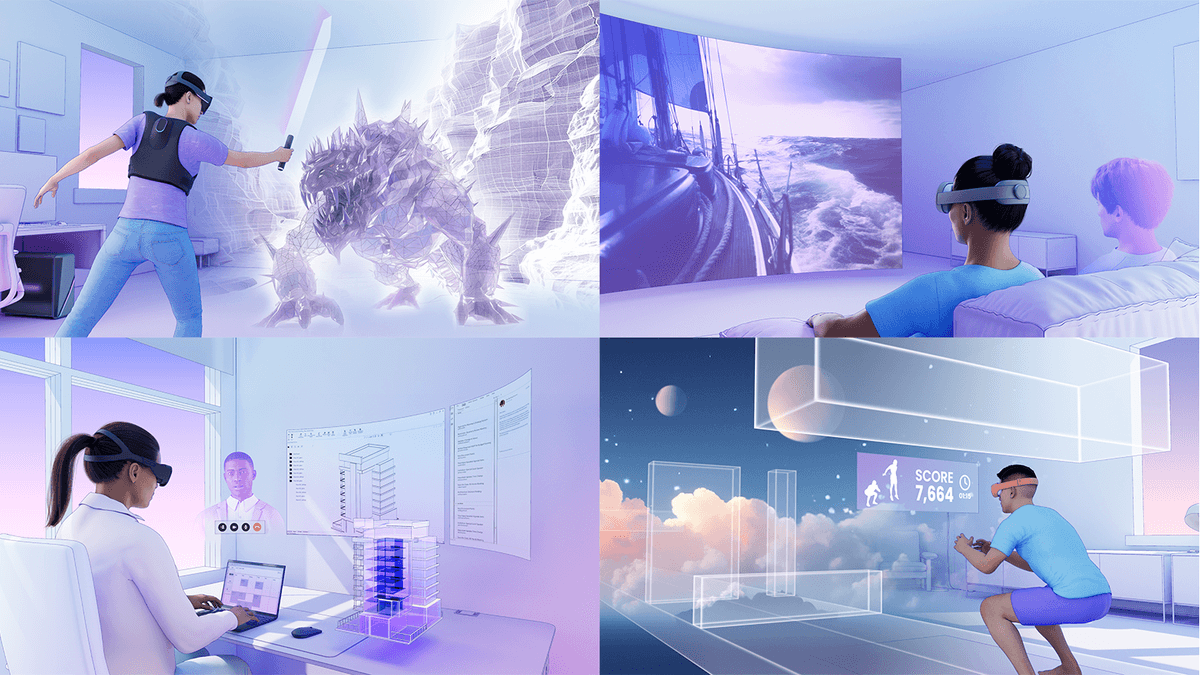Insights From The Blog
Meta Horizon OS: An Open Ecosystem for XR?
The old disc-operating system (DOS) is one of those computing terms that has fallen into disuse for all but around 0.0005% of the regular computer using population. Once being the ONLY way that any kind of program could be run on a computer, the advent of usable operating systems (OS) which ran on top of DOS, effectively closed it down as a necessity. OSs are user-friendly; DOS not so much.
What’s an OS again?
An OS is the sub program that your main software runs in. Think: Microsoft Windows, Linux, or iOS. It is the computer-loaded program that doesn’t do much apart from giving you a desktop that your interesting software sits in, and doesn’t appear to have much of a function beyond running the calculator and system settings.
But why you may not really appreciate them or what they do, OSs are hugely important and, being essential system software, are potentially huge money spinners due to the need to ship them with every computer-based product sold. While Apple Vision Pro may have a version of iOS, Meta products were not developed with an existing OS, and run a bespoke system developed especially for them. With VR/AR product sales growing steadily, managing to create an OS that can be easily used to support other VR apps would be akin to, well, installing MS Windows on almost every PC. As headset sales soar, getting a standard OS on every non-Apple version could be very lucrative indeed.
With this in mind, Meta are pushing their Horizon OS as the one for other hardware developers to choose for their XR products. Horizon is the result of ten years of effort by Meta to create a next-generation computer platform for use with XR equipment
Meta created technology for more natural interaction systems and social presence as well as inside-out tracking to be the first to market standalone headsets. The business has spent a lot of time building intricate eye, facial, hand, and body tracking in addition. For mixed reality, they have developed a complete suite of tools, including Scene Understanding, Spatial Anchors, and high-resolution Passthrough, to combine the digital and real worlds. Their pitch to other hardware manufacturers is that why go through the pain of developing a bespoke OS when the Meta Horizon system can be made to fit straight on and already has much of the functionality that they will ever need anyway. All the third party user needs to do is to buy a licence and build their own front end software into the Horizon package.

In this way, through its Horizon OS platform, Meta hopes that developers and creators would have easy access to a full range of tools and frameworks for quickly creating mixed reality experiences. A great chance for new producers to enter the mixed reality scene, the solution also includes integrated content discovery and monetisation tools.
Meta Leads the way
The Meta Horizon Store – the new name for the Meta Quest Store – offers developers access to a variety of tools and frameworks in addition to a simple method to expand the user base of their apps globally. Furthermore, by enabling developers to build a single Horizon OS product that can be used on a variety of devices, the ecosystem will save time and money needed to develop specialised solutions for various wearables. Meta hope that by allowing developers to build new applications for use in the OS, they will rapidly expand its adoption throughout the industry.
More mixed reality adoption may result from Meta Horizon OS than merely empowering developers. Powering Quest gadgets now, the “social layer” will permeate the entire new open environment. Being similar to a computer-based OS, the system will allow avatars, material, identities, and even buddy groups to be moved around quickly and changes made to profiles with ease. The idea is to create a multi-use OS that will bridge the gap between different devices and software; good news for users as they won’t have to figure out how to do things on multiple platforms, and good news for Meta who would gain a huge portion of the market.
But Is it Really a Good Deal?
The Meta OS isn’t entirely open, it should be noted. Currently, Meta only supports particular hardware combinations, so any device type that utilises Meta Horizon OS will still require approval from the firm. As the Qualcomm Snapdragon XR2 Gen 2 or XR2+ Gen 2 processing chips are required, most of the new headsets created with the OS will have comparable capabilities. Developers would thus need to come up with strategies to set their products apart from the competitors, maybe by emphasising aspects like comfort or display resolution. That also implies, though, that there shouldn’t be many hardware integration problems to worry about.
The notion behind the Meta OS is a good idea as it will make integration potentially much easier and will undoubtedly lead to faster take up of MR devices and systems. How easy it will be to use and what quirks that it might have are currently not known, but we are pretty sure that Meta will have spent plenty of time testing it, and we at Unity Developers can’t wait to get our hands on it.
If you have a possible app or game that you would like to develop, why not contact us and see how we can help.